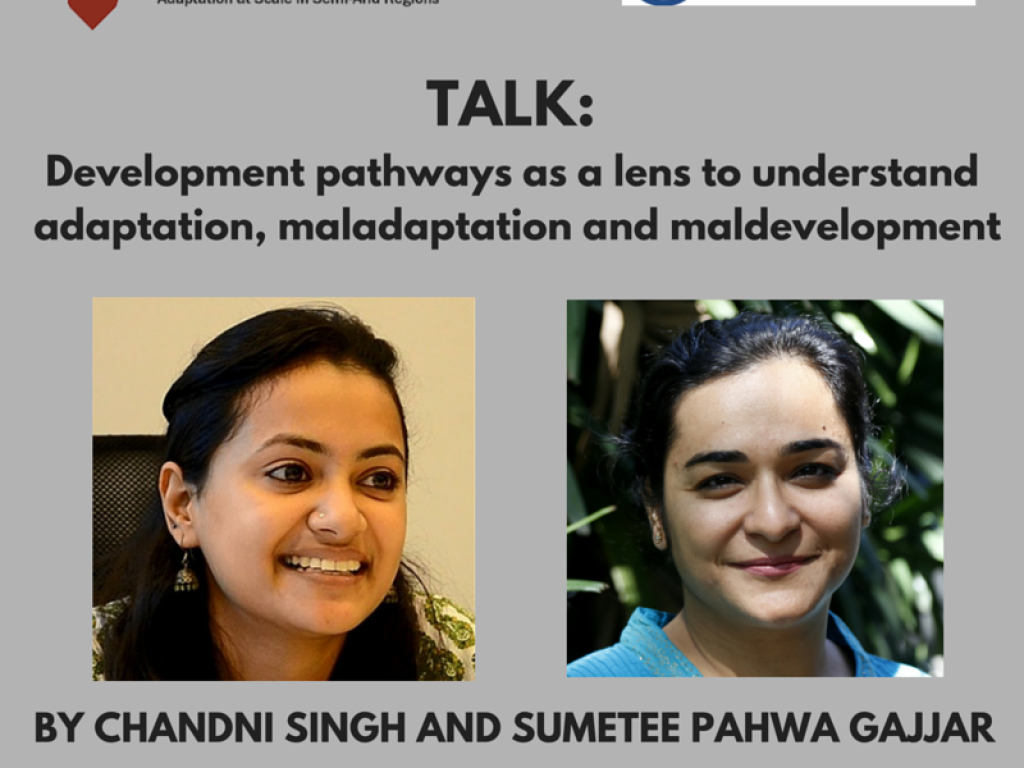Adaptation pathways and maladaptation

by Chandni Singh
P

athways approaches are gaining prominence for understanding how people and systems manage and respond to risks, and how decisions to one risk at a certain time can have repercussions on future adaptation options. The conference session “Adaptation pathways and maladaptation” drew on case studies from around the world to demonstrate the value of using pathways to chart future adaptation options and opportunities across multiple climatic and socio-economic scenarios. Crucially, the pathways approach was discussed as a way to interrogate who wins and who loses when a certain strategy is followed and what this means for adaptation and maladaptation at a systemic level.
Along with my colleague Sumetee Pahwa Gajjar, I presented a paper titled “Development Pathways as a Lens to Understand Adaptation, Maladaptation and Maldevelopment” which drew on examples from rural and urban India. As opposed to the other papers in the session that took a future-scenarios approach, our paper looked backwards to chart how historical development decisions lock systems into trajectories that are potentially maladaptive. Whether it is urban planning and lake degradation in Bangalore, or input-intensive agriculture stoked by the Green Revolution in India’s rain-fed regions, we argued that past development decisions have implications for how people and systems adapt in the future. Our paper was well-received and sparked a lively discussion that will definitely help to refine future outputs.